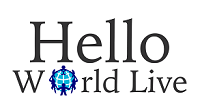
Have you ever thought about designing custom patches for your organization? We know it’s not an overnight decision since this type of advertising is incredibly important for setting your brand apart from the rest.
With the right design, you may find that it deeply resonates with your audience, setting you apart from your competitors in the best way possible. It is so much more than sticking another sticker to the back of your jacket or judicious use of iron-on letters.
If designing custom patches is something that you’re interested in doing, keep reading to find out more about how to design and make them worthwhile for your organization.
Decide the Type of Patch You Need
One of the most important decisions when designing custom patches is the type of patch you need. There are three main types of patches: embroidered, woven, and printed. Each type has its own strengths and weaknesses.
Embroidered patches are the most common type of patch. They’re made by stitching thread onto a base fabric. They are high quality but can be expensive.
Woven patches use weaving thread onto a base fabric. They are cheaper than embroidered patches, but not as high quality.
Printed patches use printing ink onto a base fabric. They are the cheapest type of patch but are also the lowest quality.
Choose the Design
There are many aspects to designing custom patches, but one of the most important is choosing the right design. The patch design should be something that represents the organization or event the patch is for.
It should be something that can be easily recognized.
It should also be something that can be easily reproduced. This is to produce the patch quickly and without errors.
Select the Type of Embroidery
There are a few different types of embroidery for custom patches. The first is direct embroidery, which is when the design is sewn directly onto the fabric. This is the most common type of embroidery and is typically used for small patches.
The second type of embroidery is applique, which is when the design is sewn onto a piece of fabric which is then sewn onto the main fabric. Applique is often used for larger patches, as it allows for more intricate designs.
The third type of embroidery is sublimation, which is when the design is printed onto the fabric using a special sublimation printer. This is the most expensive type of embroidery, but it allows for very detailed designs.
Decide the Size and Shape of the Patch
The size and shape of the patch are important factors to consider when designing new patches. The size of the patch should be proportional to the item it will be attached to. Custom patches for hats for example should complement the shape of the hat it will be attached to.
If the patch is too large or too small, it will look out of place. If the patch is an odd shape, it may not fit well on the item it is supposed to be attached to.
Successfully Designing Custom Patches
Patches are a great way to show off your unique style. With so many different ways to design them, the possibilities are endless!
This guide covers everything from choosing the right design and materials to creating the perfect patch for your needs. After reading this guide, you should have all the information you need to get started on designing your own custom patches.
If you enjoyed reading this post, make sure to check out the rest of our blog.

